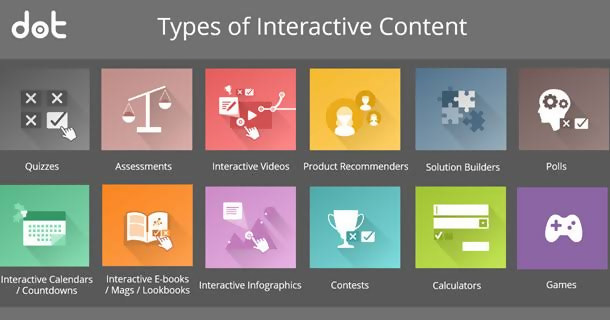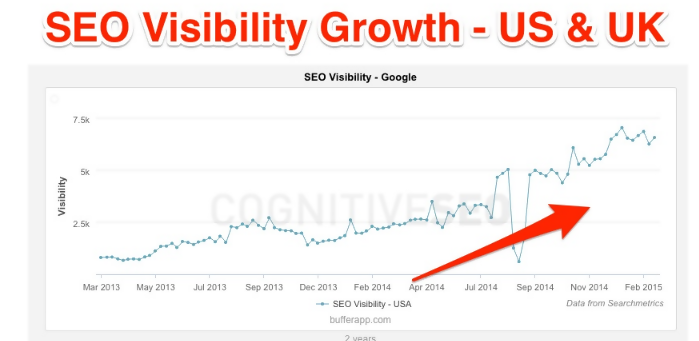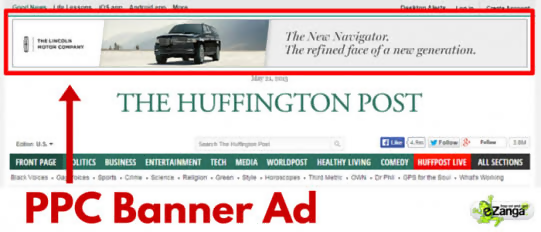Business school always taught us that a marketing strategy was the long term goal of a business and for that marketing tactics are short-term actions required to achieve that goal.
It is only with the right set of marketing tactics that you will be able to achieve your marketing strategy, and this is extremely crucial because half of the road to success is knowing the right way to reach your customers.
Each business requires a unique set of marketing tactics to succeed, so I am going to list down the perfect digital and traditional marketing tactics for your business:
#1. Blogging
Content marketing, another name for blogging is one of the common marketing tactics which is a great way to boost your SEO and get your brand noticed out there. But like I said, you need to do things the right way in order to succeed:
- Post interactive content
So when you’re reading this article, you’ll notice I’m talking directly to you. This is way more effective than using the 3rd person.
By using the 1st person narrative in your content or blogs, you can add a level of personalization that makes customers feel valued.
Your content is interactive if you are communicating successfully with your audience, and luckily, there’s a number of ways to do that:

- Be informative or helpful
There are always only 2 topics that you should focus on: either educating your followers on a topic or giving them solutions to a problem. This is to ensure that readers find your content interesting.
You’ll notice most articles have topics such as, ‘5 tips to help your hair grow faster’ or ‘How to improve your phone’s battery life in 3 easy steps’.
So if you sell hair products, you can post different articles related to hair care that your customers might find useful.
The idea is not to use blogging to promote your products – you can post articles solely for your customers’ needs, even if it is not related to your product.
The blogger turned billionaire Huda beauty still posts articles about haircare, skincare, and reviews of other brand’s beauty products, despite having her own multinational beauty brand.
This is something no other leading makeup brands in the market do, which is part of the reason why Huda Kattan has become a billionaire in just 5 years. This is what I saw on her Snapchat story today:

- Guest blogging
Guest blogging is a very evolved marketing tactics now. This is another great way to improve your SEO and get your brand trending among customers – but it only works if you post on high-authority blogs and secure websites:

Plus, you need to make sure you’re posting on a website that has the same followers as your target audience i.e. consumers who need your product/service, otherwise, your efforts will go to waste.
Let’s take the example of Gregory Ciotti – a marketing strategist for HelpScout, a startup that provides email support software for small businesses.
He used guest blogging to grow the HelpScout email list to over 36k subscribers in only 14 months!
So guest blogging can work both ways. If you’re having trouble gaining followers or getting them to read your articles, invite a guest blogger that followers love and your work is done!
#2. Pay-per-click
75% of users click on ads as they help them find the information they need more easily. But that’s not all.
PPC visitors are 50% more likely to purchase something than organic visitors!
That’s why PPC is a highly effective marketing strategy.
On average, you should expect to pay $1-$2 for every click on their website.
Since there’s a 50% or higher chance that user will purchase something, you’ll definitely gain a high Return on Investment. Do the math, it adds up!
But to generate maximum revenue with PPC marketing tactics, the most important thing you need to do is position your ads in the right places.
The first and foremost should be Google:

Google ads allow you to rank your website the highest without having to go through the trouble of SEO.
If a user is looking for dog walkers, they’ll go straight to your site – so you’re effectively marketing at a place and time when customers are in need of your product or service.
The second position for effective PPC ads is other websites. When users accept cookies on your website, they allow you to market your product to them on different platforms.
Place your ads on websites that your users are likely to visit, for example, a user looking for rentals in the Maldives will also visit airline websites.
You can also enforce the concept of remarketing here.
Suppose your customer abandons items in their cart and moves on to another website. That’s where you need to place your ads.
Why? Because 70% of visitors who are targeted with remarketing ads are likely to convert!
But you need to act fast. The quicker you show your ad, the likely your customers will convert:

Last but not least, social media platforms are a great place to position your PPC ads on.
You can place remarketing or other types of ads on Instagram and Facebook. If that’s the first place users visit after leaving your website, remarketing ads are bound to work.
Here’s how a typical social media PPC ad looks like:

With 1 billion global active users on Instagram, topped by 2.41 billion on Facebook, you’ll definitely see results by marketing PPC ads on these platforms.
In fact, you’re likely to return a higher Return on Investment on social media because these ads are cheaper.
You can expect to pay an average of 20 cents to $2 for an Instagram advert.
If you prefer to run your ads on a cost per mille (CPM) basis, focusing on impressions, then you are likely to pay around $5 per 1,000 visitors on average.
#3. Advocacy
Advocacy, word of mouth, referrals – it’s pretty much the same thing. And it’s a great promotional tactic.
92% of customers trust word-of-mouth recommendations, making it the most trusted forms of advertising.
Plus, users pay double the amount of attention to posts and recommendations by their friends.
But advocacy is not just limited to customers. These days, 81% of millennials share their company’s information, while 55% of job seekers abandon job applications after seeing a negative review.
This is why your business will never be able to attract new customers without advocating it through existing customers and employees.
You can do that through a number of different ways:
- Customer reviews
72% of customers don’t take action until they read reviews, and I can vouch for that because I do the same thing.
Some businesses don’t bother posting reviews, but what they don’t realise is how many potential customers they are losing.
However, it’s not easy getting customers to praise your brand. Customers are much more write about poor experiences rather than positive ones.
So how do you fix this? Every time a customer uses your product or service, ask them to leave a review right there and then.
It’s the optimal time to get the maximum information out of them.

Plus, you’ll notice that if a customer leaves a negative online review, you can rectify the situation by fixing the problem or satisfying your customer otherwise.
Interaction and communication with your customers can go a long way,
Restaurants, clinics, online stores and many other businesses will provide you with a comment card or a tablet device to digitally collect your review, to post on Google or on their own database.
- Product ratings
Product ratings are similar to customer reviews, except they’re in numbers.
Websites usually ask customers to rate their product from 1-5 so that customers can identify what others perceive of the brand.
Plus, platforms like Google Maps or Google’s search engine allow customers to leave ratings so that users can compare how well your business is doing compared to others:

Customers can list businesses in terms of their preference, for example, rating or hours.
The point is, if you want your business to rank higher in search results, you need to make sure that your customers leave a good rating.
- Feedback
Feedback is the same as customer reviews, except that it’s more personal – and there’s a great way to take advantage of that.
Use customer-generated content i.e. customer posts about your brands. You can reshare their videos, photos, and text-only posts appreciating your brand.
The plus side is that using infographics can really boost your views because visuals are preferred by consumers 4 times more than text.
The added benefit is also that many times businesses get creative content without having to make any effort on their own.
Take a look at this user-generated post shared by Starbucks:

#4. Endorsement
There are two ways you can endorse your brand – the more obvious and expensive way i.e. through celebrities and the other is through bloggers.
I’ve done extensive research on this subject myself, and as it turns out, celebrity endorsement is quite effective – but you need to pick your moments.
Any influencers, be it bloggers or celebrities, are likely to change the minds of consumers aged 13-34.
This age group has idols and if you choose the right ones, you’ll get them to buy the product. It’s crazy but it’s true.
You’ll see the possessions of famous actors and celebrities up for sale on Amazon and eBay. They can sell as high as thousands of dollars!
So if your target group is teenagers and millennials in general, go for celebrities that are currently trending.
However, if you’re targeting consumers above the age of 35, it’s probably best not to go with celebrities.
Use educated personalities that have extensive knowledge about the industry to support your brand, because most adults are set in their ways and they’re likely to use products endorsed only by very well informed and knowledgable.
Conclusion
These are some of the best marketing tactics to use for your marketing strategy in 2020.
The most important thing to remember, however, is that with such a complex marketing industry, you can only succeed by using the right set of tactics combined together.
Because so many different channels, customers and mediums exist – you can no longer grow your business by focusing on one marketing tactic or area.
The best thing you can do is conduct research, find what works best for your business and then use it to implement into your strategy.
But it doesn’t end there.
Once you’ve implemented your strategy, make sure to monitor it closely so that you can identify your strengths and weaknesses. This will help you eliminate your weak areas and maximise strengths in order to maximise market share.
All in all, it’s a continuous cycle that you can use to achieve success by following the latest, ever-changing trends to meet consumer needs.
